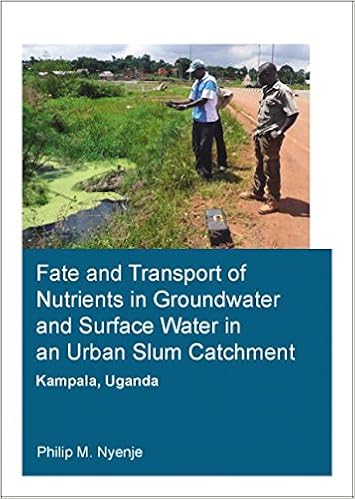
By Daniel Lord Smail
How, within the years sooner than the appearance of city maps, did urban citizens conceptualize and navigate their groups? In his strikingly unique publication, Daniel Lord Smail develops a brand new strategy and a brand new vocabulary for figuring out how city women and men considered their own geography. His thorough study of estate documents of overdue medieval Marseille leads him to finish that its population charted their urban, its social constitution, and their very own identities inside that constitution via a collection of cartographic grammars which powerfully formed their lives.Prior to the fourteenth century, varied curiosity groups―notaries, royal officers, church officers, artisans―developed their very own cartographies in response to their very own social, political, or administrative agendas. those competing templates have been created round devices starting from streets and islands to vicinities and landmarks. Smail indicates how the notarial template, which privileged the road because the most elementary marker of tackle, steadily emerged because the cartographic norm. this change, he argues, resulted in the increase of contemporary city maps and helped to inaugurate the method wherein road addresses have been hooked up to citizen identities, an important improvement within the greater company of country building.Imaginary Cartographies opens up strong new capacity for exploring past due medieval and Renaissance city society whereas advancing figuring out of the position of social perceptions in heritage.
Read Online or Download Imaginary Cartographies: Possession and Identity in Medieval Marseille PDF
Best urban books
The tiny state of Kuwait grabbed the world's realization through the Gulf conflict, in which its average petroleum source grew to become the envy of its neighboring nation of Iraq. yet Kuwait's heritage is going again lengthy ahead of any oil was once stumbled on, again to Mesopotamian settlements as early as 3000 BCE. perfect for prime institution scholars in addition to basic readers, background of Kuwait deals a finished examine how the sort of small kingdom might, basically, rule the area with only one traditional source.
Shanghai and the Edges of Empires
Even ahead of the romanticized golden period of Shanghai within the Thirties, the famed Asian urban was once amazing for its forte and East-meets-West cosmopolitanism. Meng Yue analyzes a century-long shift of urbanity from China’s heartland to its shore. throughout the interval among the decline of Jiangnan towns resembling Suzhou and Yangzhou and Shanghai’s early twentieth-century upward push, the overlapping cultural edges of a failing chinese language royal order and the encroachment of Western imperialists converged.
With the appearance of AIDS, the proliferation of gangs and medication, and the uneasy sensation that giant Brother is absolutely gazing us, the darkish facet of city dwelling appears to be like overshadowing the brighter part of delight, liberation, and chance. The Urbanization of Injustice chronicles those bleak city photographs, whereas taking to activity exclusivist politics, globalization conception, and superficial environmentalism.
City casual settlements or slums are starting to be quickly in towns in sub-Saharan Africa. mostly, a sewer process isn't really current and the commonly-used inexpensive onsite wastewater dealing with practices, in most cases pit latrines, are usually unplanned, out of control and inefficient. accordingly, such a lot families get rid of their untreated or partly handled wastewater on-site, producing excessive a great deal of food to groundwater and streams draining those components.
- Key Concepts in Urban Studies (SAGE Key Concepts series)
- The Limits of Power: Great Fires and the Process of City Growth in America
- Guide to Preparing Urban Water Use Efficiency Plans issue 83
- Company town: Potlatch, Idaho, and the Potlatch Lumber Company
- Institutionalization of State Policy: Evolving Urban Housing Reforms in China
- Selected Readings in Quantitative Urban Analysis
Extra info for Imaginary Cartographies: Possession and Identity in Medieval Marseille
Example text
From the extensive debate on capabilities, assets and livelihoods, there is a widespread consensus that the five most important capital assets of the poor can be usefully categorized as physical, financial, human, social and natural capital assets (Carney 1998; Chambers and Conway 1992; Moser 1998; Moser and Norton 2001). The consequences of violence can be analyzed in terms of their direct and indirect effects on various capital assets. For instance, physical and financial capital comprises the stock of plant, equipment, infrastructure and other productive resources owned by individuals, the business sector or the country itself, as well as the financial resources available to people (savings, supplies of credit).
As mentioned in the introductory section of this chapter, this research was conceived within a development policy environment. Therefore, before turning to the research contexts of Colombia and Guatemala, Chapter 2 outlines the policy debates and the contribution of participatory methodologies to the study of violence, fear and insecurity. 19 2 TOWARD A POLICYRELEVANT POSITIONING OF VIOLENCE The role of participatory research methodologies This chapter turns to a second important area of contestation.
The costs and consequences of violence Closely related to the causal factors underlying violence are the costs and consequences of violent action. If there is less of a contested debate about this aspect of violence than others, this can be attributed to current limitations in measurement methodologies. To date, most Latin American research is based on the economic measurement of monetary costs, which provides a common, interpretable metric for understanding the impact of crime on both individuals and society.



